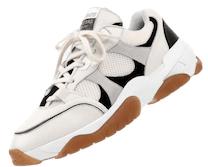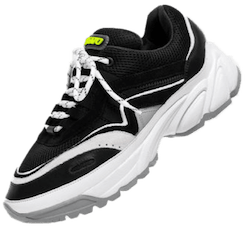Thinking about adding a blog to your online store? It's a smart move. In today's market, 90% of marketers actively invest in content marketing, and a majority of them report that it has helped them generate more leads and sales. A blog is one of the most effective ways to do this.
If you're ready to get started but need some inspiration, you're in the right place. In this post, we'll showcase 17 ecommerce blog layout examples that you can use as a starting point for design inspiration, content ideas, and more.



Why your ecommerce brand needs a blog
So, why bother with a blog for your online store? Think of it as the ultimate way to connect with your customers.
A blog is where your brand's personality can truly shine. It's a space to share valuable content that goes beyond just selling products. Whether it’s sharing behind-the-scenes stories, explaining how to use your products in a fun way, or talking about the lifestyle your brand represents, a blog helps you build a real relationship with your audience. You're not just a store—you're a resource and a community. This genuine connection can turn casual shoppers into repeat customers and loyal fans.
→ Click Here to Launch Your Online Business with Shopify
Plus, there’s a huge benefit for your business: search engine visibility. When you consistently publish great content, search engines like Google take notice. This helps your website rank higher in search results, bringing more potential customers directly to your online store.
How to start a blog on Shopify
If you're just getting started with blogging, you'll be happy to know that you can manage your blog using Shopify. Many free and paid Shopify themes have a blog (also referred to as articles, a journal, or the news section) so your blog matches the look of your online store.

To create your first blog post and manage your blog in Shopify, go to your online store under the Content menu and click on the Blog Posts link. Click on the Create blog post to create your first and future blog posts.

While you can manage your blog using Shopify, some ecommerce store owners manage their blog using CMS systems like WordPress or social blogging platforms like Tumblr. If you choose to use another system to manage your blog, be sure that you are able to find a theme that matches your online store so that visitors who go from your blog to your store (or vice versa) have a consistent experience.
17 ecommerce blog design examples
Now, let's dive into 17 ecommerce blogs that are doing it right. As you explore this list, pay close attention to the design, layout, and post titles. Use these examples to spark ideas and create a blog that not only looks great but also drives real sales for your online store.
The following ecommerce blog examples incorporate free and paid Shopify themes as well as custom designs.
1. Ghostly International: Match the branding of your store and blog
If your online store looks like this:

Then your blog should look like this:

Ghostly International keeps their uniquely retro theme rolling, from their store to their blog. Their blog layout maintains the same look as their entire website. Their blog content includes snippets from other music news outlets, playlists from their music lineup, and their latest Instagram posts. You can tell that the blog design is directly inspired by the look of their overall brand.
2. Mondo: Keep a minimalistic design
Does your blog design feel cluttered? Try a single column layout for your blog, where the blog content is the main focus.

Mondo uses the minimalist single column blog design to keep visitors focused on the content. Specifically, it keeps visitors focused on new product announcements, sales, and promotions. As one of the best-looking minimalist blogs out there, taking a leaf from their book will ensure you are on the road to a successful blog.
3. Shwood Eyewear: Get customers to create your content
Online stores with loyal brand ambassadors – or people who are enthusiastic about using and talking about your products – can look towards them as content creators.

Shwood Eyewear lets their customers inspire everyone through their journeys around the world, creating a world of breathtaking content for anyone who loves adventure. Their blog post design is a great example of a clean design that showcases content over everything else.
4. Beardbrand: Capture subscribers
Use your blog layout to capture new email subscribers. Your blog visitors may not be ready to make a purchase today. Capture their email address after you impress them with great content. You have the opportunity for a future sale through sending email marketing to them after they leave your website. When they are ready to buy, your store will be in their inbox with a new blog post, newsletter, or promotion.

Beardbrand attracts visitors with topics for the gentleman whose appreciation of style is closely intertwined with his facial grooming habits. Those who want to gain even more style tips are encouraged to submit their email address which is included in their blog design.
5. Frank Body: Talk about what matters to your customers
Not every blog has to be about products, products, and more products. Your blog page can include topics that are relevant to your customer's interests and passions.

Frank Body, a natural skincare company, writes about more than just skincare. They know their audience wants to talk about general life and health topics, so they incorporate those topics into their blog.
6. It’s a 10 Haircare: Mix product promotion and company culture
As mentioned earlier, you don't have to always talk about your products on your store's blog. Talk about things that will get people's attention. But don’t be afraid to brag a little when credit is due.

It's a 10 Haircare mixes how-to and expose content with ways they give back to their local community. Their blog design is simple, with large images stealing the show.
7. Death Wish Coffee: Run giveaways
Want to make your main blog page exciting? Turn it into your hub for anyone who wants to be the first to know about some neat items you're giving away along with your products. Keep the blog layout clutter-free with important information at the top and you will be on the right track to success.

Death Wish Coffee uses their blog to announce promotions and contests. Their latest posts include a promotion for a free duffle bag with orders of $100 or more and a contest for a duffle bag full of coffee K-cups.
8. Bottle Cutting Inc: Give customers more to do
You know what your customers like to do based on the products they buy. Capitalize on that by creating a clean blog page that gives them ideas on even more things they can do that complement the things you sell. Don't clutter your blog layout with stock images and boring text, add valuable content that you readers will love.

For those who like crafts, Bottle Cutting Inc.'s blog page offers project ideas that align well with those who use their products, which include bottle cutting, candle making, fragrance, and art kits.
9. So Worth Loving: Share compelling stories
If your business goal is to spread a particular message, use your blog page to do it. Share the stories that inspired you to build your business, or share the stories from your customers who have been inspired by your business. Choose a blog layout that is easy to read so the important information stands out at first glance, and watch as page views and blog subscribers start to increase.

So Worth Loving uses their blog to share stories submitted to them by customers and fans about self-worth, abuse, mental health, and stigmas that inspired their line of jewelry and fashion. Their blog design features quirky graphics and fonts that match their brand.
10. Ugmonk: Merge your passion with your business
Do you have a particular hobby that you'd love to incorporate on your online store? Why not try it on your blog page. Choose a blog layout that speaks to this hobby and your interests so visitors to your blog can feel your energy in everything you do.

Ugmonk uses their blog to announce new clothing and accessories as well as capture leads by offering free desktop wallpapers of photos from a trip to Iceland.
11. The Horror Dome: Stay on theme all year long
Try to Stay on Theme All Year LongDoes your store sell products that are only popular at a particular time of year? Seasonal buying habits don't have to put your blog on hold, no matter what you sell.

The Horror Dome, an online Halloween costume and theatrical supply shop, keeps the spirit of creepy alive all year long with posts on haunted houses and horror movies. Not only is this a nice blog design but it ensures consistency of brand throughout the year. Their store and blog design add to the spooky effect, even when Halloween is months away.
12. The World of Mestiza New York: Use bold photography
A picture can tell a thousand words. Great product photography will enhance your shopper's experience and ultimately lead to an increase in conversions compared to no photos, low-quality photos, or generic stock photos. The same happens for your reader's experience on your blog design – your content is enhanced by your images.

The World of Mestiza New York has a blog design that accentuates the beautiful photography included with each article.
13. Leesa: Attract your key customers
If you do market research, you'll know who your top customers (biggest spenders) are. With that knowledge, you can create blog content that is geared towards that specific demographic.

Leesa does just that with what appears to be a new series of blog posts, starting with this one aimed specifically towards entrepreneurs who love technology. Their product photo takes over their blog design for a consistent look.
14. Modkat: Mix help with humor
Humor is a great way to upgrade any blog content. Most topics have been written about on the Internet before. Your mission is to create content that has a unique perspective or evokes a strong reaction, such as laughter.

Modkat's Purr Blog uses humorous headlines and featured images to turn what could be the average cat-lovers blog into something much more entertaining for their target market. Their blog design also incorporates humor with funny photos.
15. The Awkward Yeti: Stick with your talent
Did your blog come before your online store? If your blog inspired you to create or sell products in your online store, and your blog's fans are your best customers, then your blog strategy should be simple: stick with what made your business famous – until it's no longer working.

Many online stores started with a blog, or in the Awkward Yeti's case, an artistic comic about social awkwardness.
16. Surprise Ride: Show customers how to use your products
Get customers excited about the products you sell by showing customers how to use them. If you can get customers excited about a particular project, they'll be more inclined to purchase the things they need from your store to get started.

Surprise Ride, an online store that offers project kits for kids (and adults), uses their blog to detail what it's like to work with one of their project kits. Once you've read it, you'll want to try it for yourself.
17. Almond Surfboards & Design: Highlight customer testimonials
Did you just get a glowing review of one of your products in your store or via social media? If you think that review might lead some of your blog readers to take a more serious look at your products, post it on your blog. You can post it as is or reach out to the author of the testimonial (if possible) or ask them if they want to be featured in a more in-depth interview.

Almond Surfboards & Designs mixes glowing customer reviews with news, local events, behind the scenes on their products, and product / promotional announcements.
How to design a blog
Once you have chosen a blog template to begin your blogging career you may need to make slight changes to create something truly unique. This could be choosing the right colors for your brand, or experimenting on layouts. With Shopify and other blogging platforms, you can edit templates easily. It can be done through the editor tool where you can customize things to your liking.
Questions to consider when designing your blog include:
- What content will I create for it?
- Will it be content or image heavy?
- Will I include video as part of my blog?
- Do I need social sharing buttons or a comment section?
- What will my call to action be on these pages and where will it sit?
These considerations may seem less important when you are thinking about designing a blog. In reality, these questions need to be answered before you choose a template. This is to make sure that you choose the right blog layout for the content you intend to publish and promote.
Start your ecommerce blog today
As you can see, there are lots of ways that you can create a blog that is unique because of your brand's approach to the products you sell and the market to which you sell. Your blog design can easily be enhanced on Shopify. Consider getting blog design inspiration from other ecommerce stores similar to yours. And start blogging to boost your online marketing today!
Blog design inspiration FAQ
How can you make your blog content stand out?
- Find a niche
- Choose your ideal reader
- Add value to your readers
- Be original
- Be honest and transparent
- Add your personal touch
- Do research
- Talk to your readers
- Define your imagery
- Keep it simple
What makes a blog design user-friendly?
A user-friendly blog design is clean and easy to navigate. It uses clear fonts, scannable headings, and a logical layout to help visitors quickly find the content they want.
How often should I post on my blog?
The frequency of your blog posts depends on your goals and resources. It's more important to be consistent with your schedule (e.g. once a week) than to post a lot of low-quality content.




